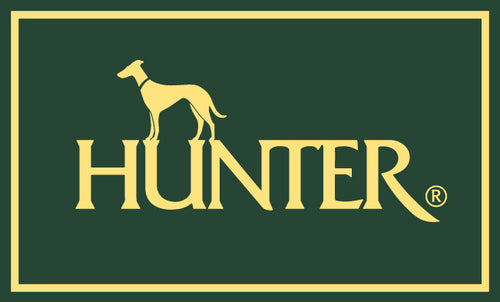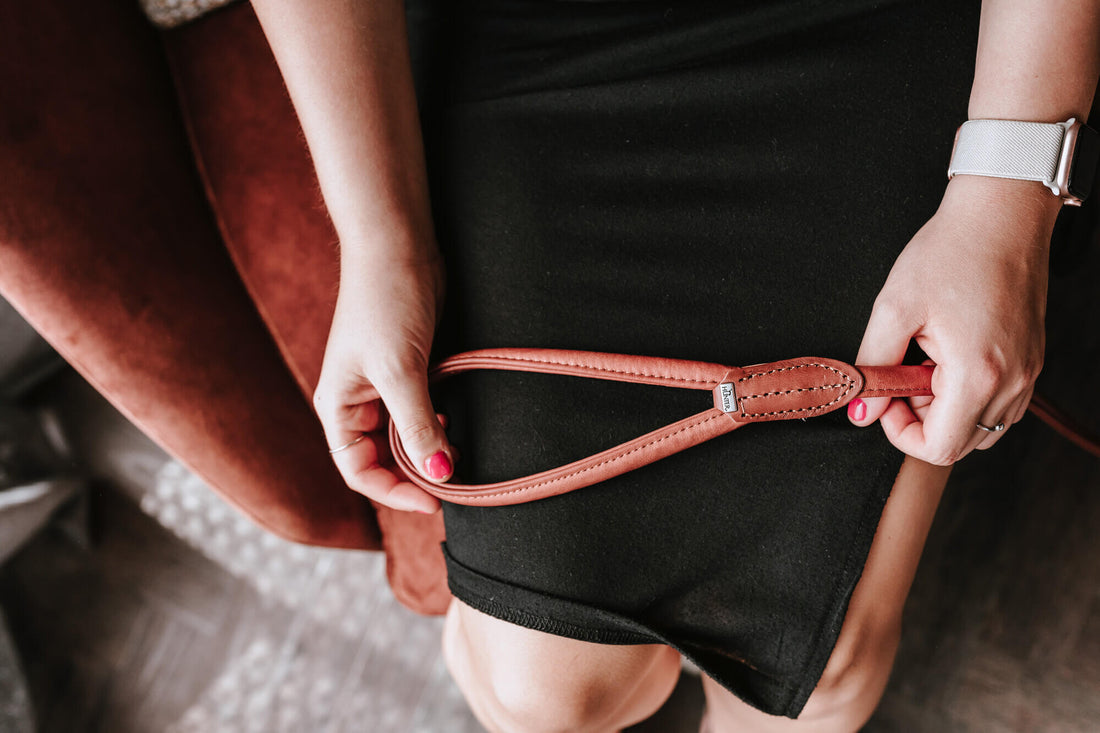Introduction
From the bustling streets of London to the serene landscapes of the Lake District, a simple, often overlooked item has remained a constant companion in our shared journey with dogs: the dog lead. For millennia, this humble tool has been emblematic of the profound bond between humans and their four-legged friends. In this piece, we'll delve deep into the rich tapestry of history, exploring the dog lead not merely as a practical tool, but as a testament to our ever-evolving relationship with canines. Join us as we trace the lead's transformation, reflecting our changing roles and the enduring partnership that has, and always will be, at its heart.
Anthropology and the Ancient Bond
First Signs:
Long before the rise of great ancient civilisations, in the shadowed nooks of prehistoric caves, early humans painted pictures that provide us with the first hints of domesticated dogs. These ancient artworks and fossil records suggest that our bond with canines dates back some 20,000 years, if not more. As hunter-gatherers, early humans recognised the utility and companionship of wolves, which eventually led to the domestication of the first dogs. These animals were not just hunting partners but also guards, warmers, and, in many ways, family.
Primitive Leads:
With the domestication of dogs came the challenge of managing and controlling them, especially in communities that began to settle. Ancient artefacts have given us insights into how our ancestors might have kept their canine friends close. Bone, vine, and rawhide were likely materials for the earliest leads. These were not just functional but also a symbol of status and the importance of the dog within the tribe or community. In ancient Egypt, for example, ornate collars and leashes made of precious metals and stones indicated a dog's high status, suggesting that their leads were as much about ceremony and display as they were about practicality. Such examples indicate how the dog lead, in its primitive forms, played a pivotal role in the socio-cultural dynamics of ancient societies.
Evolution of the Dog Lead: A Timeline
Ancient World:
Egypt: The arid lands of ancient Egypt revered cats, but dogs too had their special place. Luxurious collars with intricate designs were crafted using materials like gold and embedded with semi-precious stones. The leads of the time were both a symbol of status and a functional restraint.
Rome: As Rome expanded its territories, the need for guard and hunting dogs grew. Thick leather was commonly used for leads, both for durability and as a show of Roman opulence. The more ornate leads, often decorated with bronze and silver, were reserved for the dogs of the elite.
China: The ancient Chinese civilisation, known for its lavish silks and fabrics, also used them in designing their dog leads. Decorated with intricate patterns, these leads often complemented the attire of their owners. Moreover, breeds like the Pekingese were considered regal, and their leads were a testament to their revered status.
Middle Ages to Renaissance:
As Europe transitioned from the Middle Ages into the Renaissance, the purpose of dog leads began to shift. While they were still tools for control, especially in hunting, they also started to symbolise the status of both the dog and its owner. Leather remained a preferred material, but the designs became more intricate, often personalised with family crests or emblems. The wealthier aristocrats used precious metals and gemstones to adorn their dogs' leads.
Modern Era:
With the advent of the industrial revolution in the 18th and 19th centuries, materials like rubber and later, synthetic fibres, were introduced to the making of dog leads. This allowed for greater durability and flexibility. The 20th century saw a surge in pet ownership, leading to a boom in pet accessories. Dog leads became more than just a functional item; they began to reflect personal style. Designs became more varied, from simple nylon leads to retractable ones, and even those embedded with LED lights for nighttime walks. The present-day market offers a fusion of functionality, safety, and style, with an emphasis on ergonomic designs for both the handler and the dog.
The Dog Lead as a Status Symbol
Ancient Royalty:
Throughout ancient civilisations, dogs and their accompanying leads were often viewed as extensions of their owner's status. In Egypt, the canine gods like Anubis were depicted with ornate collars, symbolising their divine status. Pharaohs and nobility often had their dogs adorned with collars and leads made of gold, lapis lazuli, and other precious materials. In Rome, the more opulent and decorated the lead, the higher the rank of the person at the other end. It wasn't just a restraint; it was a statement of wealth, power, and prestige.
Victorian Era:
The Victorian period saw a renewed interest in domesticated dogs, not just as working animals, but as companions and symbols of status. The era marked the rise of dog shows, where the right lead became as crucial as the breed and grooming of the dog itself. Rich velvets, silks, and finely tooled leather leads were commonplace among the elite. The lead became more than just a functional accessory; it was a piece of art, a representation of the Victorian obsession with detail, beauty, and social standing.
Today:
In our modern world, the dog lead continues its legacy as a status symbol, albeit in a more subtle fashion. Designer brands have ventured into the world of pet accessories, offering leads that sometimes cost more than the average handbag or pair of shoes. Materials range from luxury leathers to sustainable vegan alternatives, often decorated with brand logos or bespoke embellishments. But it's not just about flaunting wealth. The type of lead one chooses today also speaks volumes about their approach to pet parenting. An eco-friendly, recycled-material lead might hint at an owner's environmental consciousness, while a tech-infused smart lead could indicate a penchant for modernity and innovation. In a world where individuality is cherished, the humble dog lead continues to be a canvas for self-expression and status.
Cultural Variations in Dog Lead Design
Eastern vs. Western World:
The design and function of dog leads have seen variations rooted deeply in cultural values and aesthetics across the East and West.
In the Eastern world, particularly in regions like China and Japan, the use of dog leads often merged functionality with art. Intricate patterns, symbols, and scripts were woven into the fabric or inscribed onto leather leads, each carrying a specific meaning or wish for the dog, like longevity or protection. There's also a significant influence of spirituality, with some leads incorporating elements believed to ward off evil spirits or bring luck.
Conversely, in the Western world, dog leads initially had a more utilitarian design, especially in ancient European cultures. However, as time progressed, and especially during the Renaissance period, dog leads began to reflect more ornate and artistic flair, showcasing the owner's wealth and status.
Local Materials:
The geography of a region played a pivotal role in determining the materials used in dog lead design.
In coastal regions, for instance, one could find leads made from sea materials like shells or braided seaweed, sometimes even fish skins. The arid landscapes of the Middle East led to the use of camel leather, prized for its durability. In colder, Northern European countries, materials like reindeer hide or wool were common.
The tropical climates of regions in South East Asia saw the use of materials like bamboo or rattan. These were not only durable but also allowed for a level of flexibility and comfort for the dog.
As trade routes expanded and globalisation took hold, there was a blending of materials and designs, but local, traditional designs maintained their charm and continue to be sought after for their authenticity and cultural significance.
VII. The Future of Dog Leads
Tech-Integration:
As technology continues to permeate every aspect of our lives, the humble dog lead is no exception.
Smart Leads: New-age leads are going beyond just tethering a dog. With integrated technology, future leads might monitor a dog's vitals, offering real-time health insights right on a mobile app. This could be especially useful for senior dogs or those with health issues, ensuring they're not overexerting themselves during walks.
GPS Tracking: Gone are the days of plastering the neighbourhood with "Lost Dog" posters. Modern leads could come equipped with in-built GPS tracking, ensuring that a wandering pet can be quickly located. This feature might also have geofencing capabilities, alerting owners if their pet goes beyond a set perimeter.
Sustainable Materials:
The current wave of environmental consciousness is leading industries worldwide to reconsider their production materials, and the pet accessory industry is no different.
Biodegradable Options: With the environmental crisis at its peak, leads made from biodegradable materials are poised to become popular. These would decompose naturally, leaving no trace behind, unlike their plastic counterparts.
Recycled Materials: Some innovative companies are already producing dog leads made from recycled materials, like ocean plastics. Such initiatives not only reduce waste but also give a second life to materials that would have otherwise polluted our planet.
Vegan Leather: With the rise in veganism and concern for animal welfare, vegan leather, made from materials like mushrooms, apples, or synthetics, offers the luxe look of leather without the associated ethical concerns.
The future of dog leads, much like many other products, lies at the intersection of technology and sustainability, ensuring comfort and security for our canine companions while being kind to our planet.
Conclusion
From ancient civilisations where the bond between man and dog first flourished, to the bustling streets of our modern cities, the dog lead has remained a constant yet evolving symbol of our deep connection with our four-legged friends. It has transformed from a simple tether crafted from available materials to an emblem of status, culture, and now, technological innovation and environmental consciousness.
While the materials, designs, and purposes of dog leads have shifted over time, their core function remains unchanged: to keep our beloved canines close to us. As we've journeyed through history, culture, and potential future innovations, it's evident that the dog lead is so much more than just a piece of equipment. It's a testament to the enduring and evolving relationship we share with our dogs.
So, the next time you clip on that lead for a walk around the park or a trek through the wilderness, remember that you're not just holding a functional item, but a piece of history and a symbol of the age-old human-canine bond.

